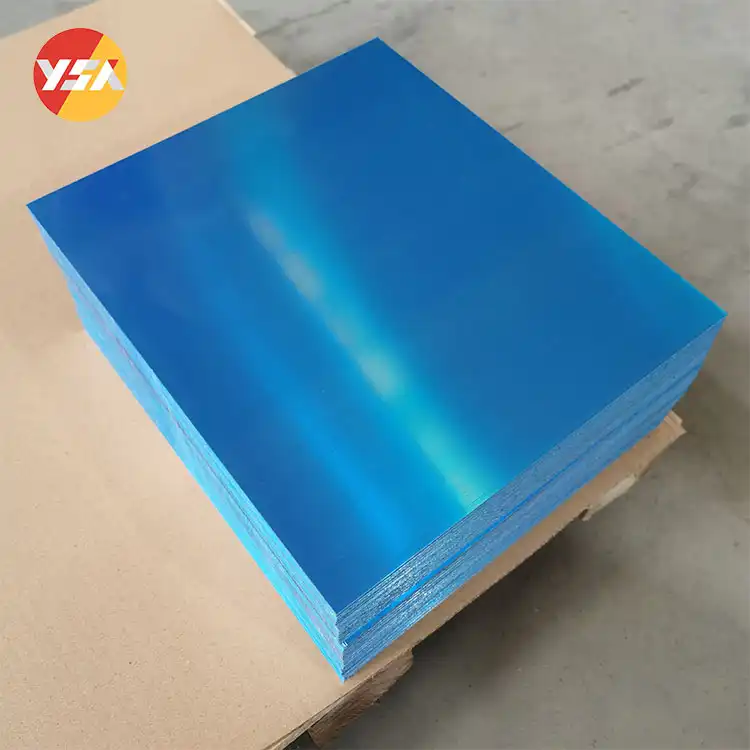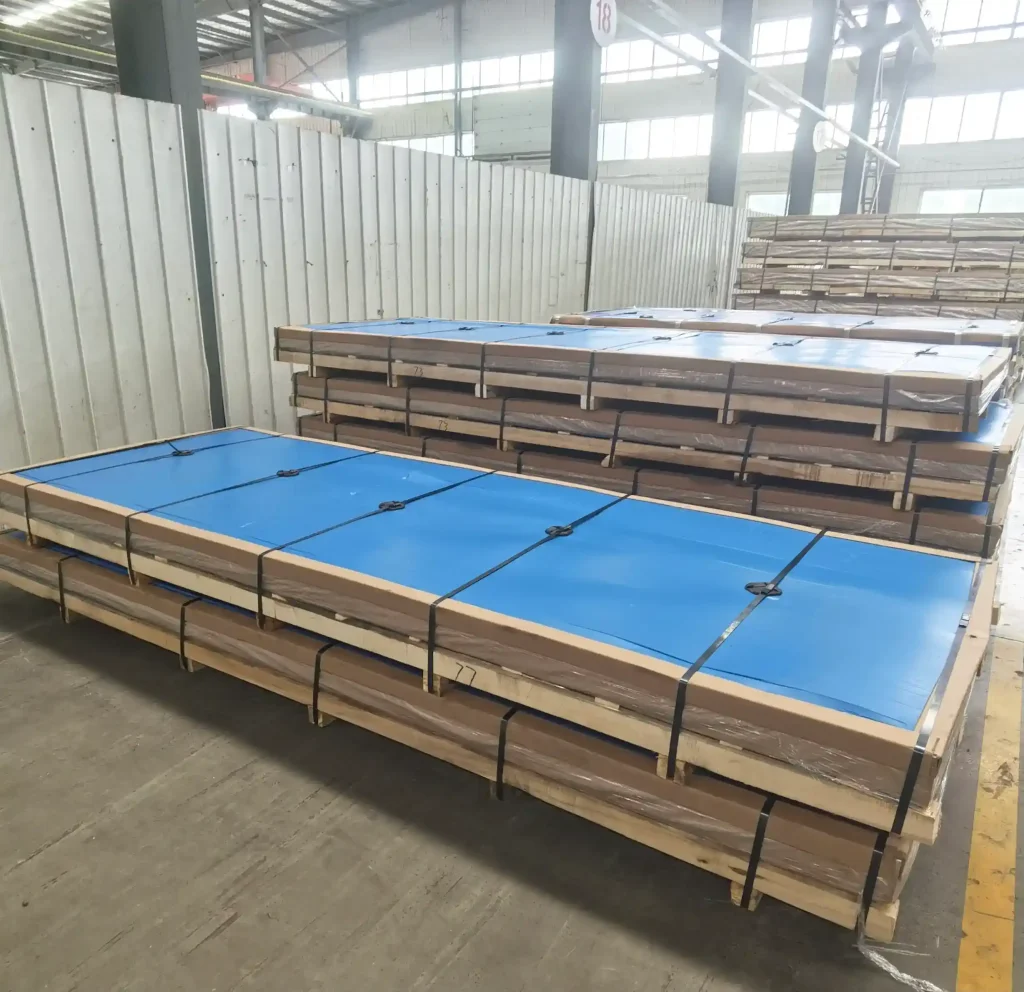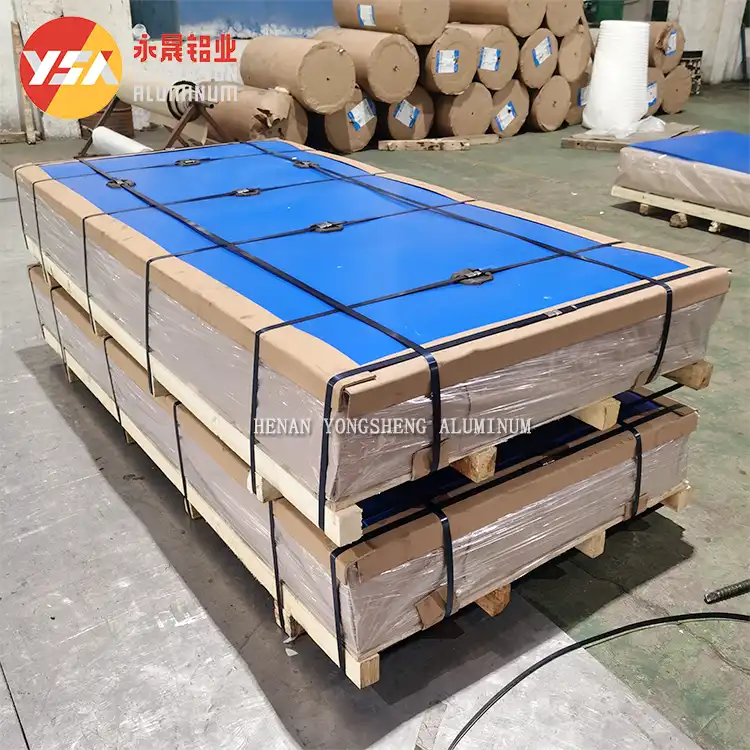5052 H34 Aluminum Introduction
5052 H34 aluminum is a specific grade of aluminum alloy that is extensively used in many kinds of industries owing to its fantastic combination of strength, formability, and corrosion resistance. The “5052” refers to the alloy composition, which primarily consists of aluminum with small additions of magnesium and chromium. These elements improve the alloy’s strength and make it suitable for structural applications. The “H34” designation indicates the temper or hardness of the material. H34 is a strain-hardened and partially annealed condition, providing a good balance between strength and workability. This aluminum alloy is commonly utilized in marine, automotive, aerospace, and architectural applications, where lightweight, durable, and corrosion-resistant materials are required.

5052 H34 Aluminum Properties
| Performance Characteristic | Description |
| Strength | Good combination of strength and formability |
| Formability | Excellent ability to be shaped and formed without cracking |
| Corrosion Resistance | High resistance to corrosion and saltwater |
| Weldability | Good weldability with appropriate techniques |
| Machinability | Fair machinability, can be more challenging than softer alloys |
| Surface Finish | Smooth surface finish with a natural brightness |
| Anodizing | Responds well to anodizing processes |
| Paintability | Suitable for various paint and coating applications |
| Durability | Durable and long-lasting, especially in marine environments |
5052 H34 Aluminum Physical Properties
| Physical Property | Value |
| Density | 2.68 g/cm³ |
| Melting Point | 607 – 650 °C (1125 – 1200 °F) |
| Thermal Conductivity | 138 – 153 W/m·K |
| Coefficient of Thermal Expansion | 24.2 x 10^-6 /°C |
| Electrical Conductivity | 34 – 40% IACS (International Annealed Copper Standard) |
| Specific Heat Capacity | 0.900 J/g·°C |
| Young’s Modulus | 70.3 GPa (10.2 x 10^6 psi) |
| Poisson’s Ratio | 0.33 |
5052 H34 Aluminum Mechanical Properties
| Mechanical Property | Value |
| Tensile Strength | 33,000 – 45,000 psi (228 – 310 MPa) |
| Yield Strength | 28,000 – 38,000 psi (193 – 262 MPa) |
| Elongation at Break | 12% – 20% |
| Modulus of Elasticity | 10.2 x 10^6 psi (70.3 GPa) |
| Shear Strength | 23,000 psi (159 MPa) |
| Hardness (Brinell) | 60 HB |
| Hardness (Rockwell B) | 20 HRB |
5052 H34 Aluminum Sheet Manufacturing Process
The manufacturing process of 5052 H34 aluminum sheets typically involves several stages, including casting, hot rolling, cold rolling, annealing, and tempering. Here’s a general overview of the process:
- Casting: The initial step involves melting aluminum ingots or recycled aluminum to form a molten metal. The molten aluminum is then cast into large slabs or billets using a continuous casting process.
- Hot Rolling: The cast aluminum slabs or billets are heated and passed through a series of rolling mills. These mills gradually reduce the thickness of the aluminum while increasing its length and width. This process, known as hot rolling, helps refine the grain structure and improve the material’s mechanical properties.
- Cold Rolling: After hot rolling, the aluminum undergoes a process of cold rolling. The sheet is passed through additional rolling mills at room temperature to further reduce the thickness and improve surface finish. Cold rolling also enhances dimensional accuracy and imparts desirable mechanical properties.
- Annealing: The cold-rolled aluminum sheet is then subjected to an annealing process. This involves heating the material to a specific temperature and holding it for a certain period to relieve internal stresses, improve workability, and promote recrystallization. Annealing also contributes to the development of the desired temper, such as H34.
- Finishing and Cutting: Following annealing, the aluminum sheet undergoes various finishing processes. These may include trimming, cutting, edge conditioning, and surface treatments like cleaning or coating, depending on the specific requirements of the application.
- Final Inspection and Packaging: The finished 5052 H34 aluminum sheets are thoroughly inspected to ensure they meet the desired specifications and quality standards. They are then packaged and prepared for shipment or further processing, depending on customer requirements.

5052 H34 Aluminum Application in Marine Vessels Making
5052 H34 aluminum finds a wide range of applications across various industries due to its desirable combination of properties. One specific application where 5052 H34 aluminum is commonly used is in the construction of marine vessels, such as boats and ships.
The marine environment presents numerous challenges, including exposure to corrosive saltwater and the need for lightweight yet strong materials. 5052 H34 aluminum is well-suited for these requirements. Its excellent corrosion resistance makes it ideal for marine applications, as it withstands the corrosive effects of saltwater without significant degradation.
Additionally, 5052 H34 aluminum offers sufficient strength and formability, allowing it to be easily shaped and fabricated into structural components for boats and ships. It is used for various marine parts, including hulls, decks, superstructures, and other components that require a combination of durability, lightweight, and resistance to corrosion.
The use of 5052 H34 aluminum in marine applications helps reduce weight, improve fuel efficiency, and enhance the overall performance and longevity of marine vessels.

5052 H34 VS 5052 H32
Mechanical Properties
- 5052 H34: It has a higher degree of strain hardening, resulting in increased strength and improved resistance to deformation. It offers moderate to high strength levels.
- 5052 H32: It has a slightly lower degree of strain hardening compared to H34 but still provides good strength. It offers excellent formability and is known for its ability to easily undergo shaping, bending, and deep drawing processes.
Application Suitability
- 5052 H34: It is suitable for applications that require a balance of strength, formability, and resistance to bending or shaping. Common uses include sheet metal fabrication, automotive components, marine equipment, and general structural applications.
- 5052 H32: It is ideal for applications that prioritize formability and easy shaping. It is commonly used in sheet metal work, architectural components, signage, and general fabrication where excellent formability is crucial.
Strength VS Formability
- 5052 H34 offers higher strength and improved resistance to deformation, making it suitable for applications where strength is a priority.
- 5052 H32 prioritizes excellent formability, making it ideal for applications that require easy shaping or forming processes.

Summary
5052 H34 aluminum is a highly versatile alloy that offers excellent strength, formability, and corrosion resistance. Its unique properties make it a sought-after material in various industries, particularly in marine applications where durability, lightweight, and resistance to saltwater corrosion are crucial. Understanding the composition, properties, manufacturing process, and applications of 5052 H34 aluminum can help industries leverage its benefits and make informed decisions when selecting materials for their projects.

FAQ
Is 6061 a marine grade aluminum?
6061 aluminum is not typically considered a marine grade aluminum due to its lower corrosion resistance compared to alloys specifically designed for marine environments, such as 5052 or 5083. While 6061 aluminum has good strength and weldability, it is not as resistant to the corrosive effects of saltwater as marine-grade alloys. Therefore, it is generally not recommended for direct exposure to marine environments without additional protective measures.
Is 5052 cheaper than 6061?
The cost of aluminum alloys can vary based on factors such as availability, demand, and specific supplier pricing. In general, comparing 5052 and 6061 aluminum, 5052 aluminum is more cost-effective. This is because 5052 is a more common alloy and is widely used in various applications, including marine, automotive, and general sheet metal fabrications. On the other hand, 6061 aluminum is often used in applications that require higher strength and is commonly associated with more specialized or demanding applications, which can contribute to a higher cost.
What is H34 aluminum?
H34 is a temper designation for aluminum alloys. It indicates a specific combination of mechanical properties achieved through a process of strain hardening and partial annealing. H34 represents a condition of strain-hardened and partially annealed aluminum. In the case of 5052 H34 aluminum, it has undergone cold working (strain hardening) and subsequent partial annealing to achieve the desired temper. This temper provides a balance of strength, formability, and resistance to deformation.
Is 5052 aluminum food safe?
Yes, 5052 aluminum is considered food safe. It is widely used in the food and beverage industry for applications such as food packaging, storage containers, and cooking utensils. 5052 aluminum is non-toxic and has good corrosion resistance, making it suitable for contact with food and beverages. However, it’s important to note that proper cleaning and maintenance practices should be followed to ensure the safety and hygiene of food contact surfaces made from 5052 aluminum.
Is 5052 aluminum magnetic?
No, 5052 aluminum is not magnetic. Aluminum, in general, is non-magnetic. The lack of magnetic properties in aluminum alloys, including 5052, makes them suitable for various applications where magnetic interference or attraction is a concern. This property can be advantageous in certain industries, such as electronics or electrical applications, where non-magnetic materials are desired.


